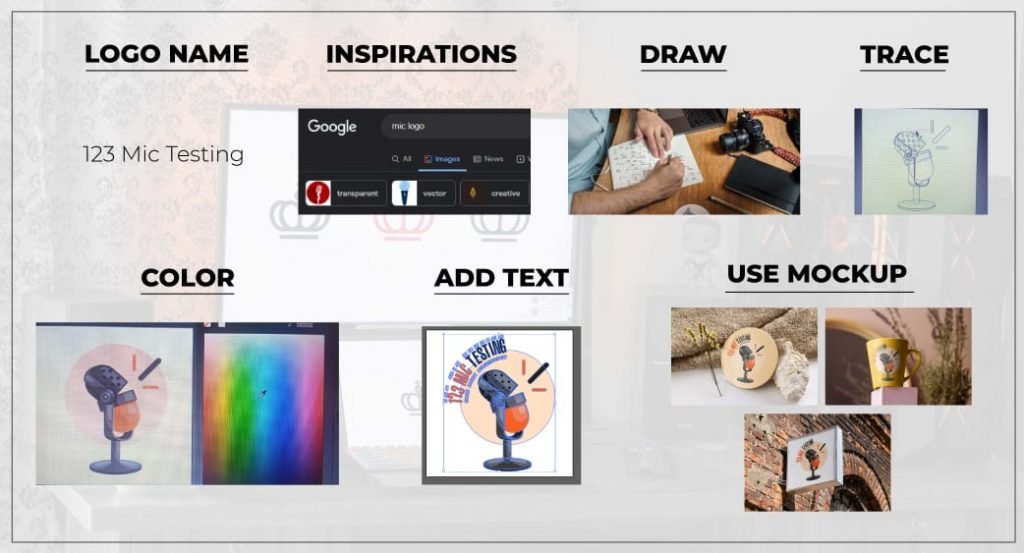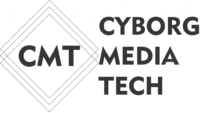Your logo design versus your brand identification
The distinction between your brand, your brand identification, and your logo design needs to be made very clear. They are not the same, so don’t be confused! You do, however, need to focus attentively on each.
Brand Name
Your brand is how people view your company as a whole. This is the sum of your brand’s purpose, goal, history, and marketing plan.
Take a look at The Definitive New Business Brand marketing Guidebook if you’re struggling to understand what your logo is and how it develops. It is packed with suggestions and guidance for branding your logo.
Brand Identification
Your total brand is visually represented by your brand identity. It’s how your brand visually communicates.
Yes, your logo design contributes to your brand recognition, but there are other factors as well. It includes the words you use, the technical decisions you make, the photographic approach you utilize, and other factors in your brand awareness.
Your brand recognition should be summarized in a guideline, generally referred to as “Unique Brand Standards,” when you work with a design company to assist in building and designing your logo.
Define a logo
Probably an apple with a piece taken out of it or an iconic swoosh comes to mind when you think about this question. We all understand what a logo is, after all.
A logo is a symbol or style that identifies a business or an organization, together with its offerings, people, etc. A logo, in the most basic sense, identifies. It affects how people perceive and remember your company. It serves as the standard bearer of your company as well.

Tips for creating a logo
Apparently, a lot of planning goes into the design
Yes, you will ultimately need to produce something visually appealing. However, the majority of the effort is strategic, notably in the beginning. Be prepared to analyze and make decisions more often than you expect.
You’re not simply designing a brandmark
Keep in mind that the logo is merely a small component of a wider visual field, and each of its elements must function as a whole.
You should work in stages if you want to achieve something correctly. Although every designer has a unique process, the one we’re going to walk you through comprises five stages:
- Investigate
- Find
- Layout and Design
- Refining
- Define
Each step has its own goals, procedure, and output. We’ll discuss the significance of each phase, the set of steps you must do, and the end product you’re aiming for—which you’ll need for the following phase.
Stage One: Investigate
Objective
The investigation stage is the learning stage. Designers take advantage of this opportunity to learn as much as they can about their client’s companies, brands, and other aspects of their client’s companies or organizations. Inquiries about the desired design and feel, all potential use cases and any specific needs can also be presented at this stage.
This will be more of a test of identity for you. Having a clear understanding of who your business or company is, what you stand for, what you want to achieve, and how you plan to get there, is your objective. Keep in mind that you’re not simply designing an emblem. Your brand identity is being developed.
Even though you might feel as though you already know the answers, I recommend you to practice writing them down. There may be some things you haven’t considered, in my opinion.
Procedure
- Why do you desire or require a new trademark? What prompted the creation of this design?
- What is the origin of/story behind the name of your business?
- Who are your intended customers?
- Who is your top competitor?
- What objectives do you have for the new symbol? How will the term “success” be defined?
- Who are your top three “role models” for brands? Who possesses a style you admire?
- When someone sees your emblem, what do you want them to feel?
- What principles do you want your brand to represent?
- What unique qualities best describe the personality of your brand?
Stage Two: Find
Although “Find” sounds more exciting, this is your research stage. And it is, we guarantee you. As someone starting this design process alone and potentially for the first time, I find the discovery phase to be both the most interesting and informative.
Basically, you’ll be moving your attention outside of yourself to find and research design outside. Your two objectives are as follows: Get inspired and motivated.
Procedure
Search for fundamental design principles to get started. Learn about the basics of design, hue, and layout.
Some color theory ideas, according to our designers, can be particularly beneficial for logo design. Different hues inspire various feelings and actions, which might help you get the desired emotional response from your audience. Really, it’s excellent content.
For instance, the blue color indicates stability, authority, and trust. The fact that a blue is a common option for banks, credit cards, and software is not a coincidence. Green represents peace, expansion, and health. Brands like Whole Foods and BP deliberately represent their level of interest in the environment through the use of green in their trademarks.
Stage Three: Layout and Design
Objective
Finally! The objective is quite simple: Start creating some logo concepts using all the factors and inputs from the first two phases.
Procedure
Many factors need to be taken into account when deciding how to create an emblem.
Techniques
Make sure you have everything you’ll need for design before you started.
A Page and Pencil
Making some rough sketches of your ideas is a wonderful start. Don’t make this too complicated. Adaptive design is a method. Make rough sketches of the concepts you have in your head, even if you don’t think you can draw. You’ll be compelled to think creatively, which is the mindset you desire.
Graphic Design Software for Graphics
Adobe Illustrator is the industry standard for editing vector graphics, although it’s expensive and not always user-friendly for beginners. Try exploring complimentary programs like Inkscape and Vectr that are comparable.
Why is Vector Software selected for Logo Design? All logos are vector images, which means that they are composed of mathematically defined lines rather than pixels, like pixelated images are. Scaling and altering vectors is simpler.
Font Styles
Fonts If you choose the mentioned path, you might wish to consider downloading some extra fonts. The Google Fonts collection and Font Squirrel are two sources for free fonts. Additionally, websites like MyFonts and FontShop provide fonts for sale.
Font Psychology in Logo
Prior to delving into the specifics of fonts in graphic and logo design and how font psychology might affect your client, it is important to understand why particular scripts have such strong emotional responses.
Serif Font Psychology
Serif fonts are the most convenient alternative and are the best choice if you want to build a “familiar” sense for your organization because they inspire ideas of luxury and tradition. Serif fonts are ideal for brand names that focus on authority and magnificence because of their traditional quality, which inspires feelings of confidence and credibility.
Slab Serif Font Psychology
Slab serif typefaces resemble serifs but have distinct slab elements, and are generally seen as a “post” of typefaces. They are probably connected to comfort, stability, and a sense of confidence.
Displaying and attractive fonts
Finally, show or beautiful typefaces are your best bet if you’re looking for typographic brand design ideas. These are unique, sometimes modified typefaces that vary significantly from the standard and are most frequently utilized in brandmarks. These unique look and stylized fonts give your company personality, but before you make a choice it’s important to carefully analyze the emotional attachment our customers will have to such.
Tools for supporting free logos
There are many internet resources that will do the job if you are short on time, budget, or successful projects. The majority of these websites have editable layouts, which would be the quickest approach to making a professional-looking brand name. Just be aware that doing so may result in the loss of originality.
Despite the fact that the following tools are free, you might need to pay for the ultimate, vector graphic file in order to get it.
Five best free tools for creating logos
Kinds of Logo
Learn about the following seven kinds of logos before choosing whether to create your logo from fresh or use a basic framework:
WordMark
What does the term “wordmark” mean?
Wordmark is a form of logo design where no other elements—such as icons, mascots, or badges—are included outside the company name. For smaller locations like social media profiles and favicons, wordmark logos—also known as “logotypes”—can contain monogram logo variations.
Brand Symbol
Brand Symbol marks, also referred to as “photographic marks,” are the visual elements of a logo. These symbols typically have a familiar meaning and help your audience make a quick impression. An outdoor company might use mountains or a tooth to represent themselves, for instance.
You must initially connect a brand symbol with the name of your business or organization. But over time, the sign on its own could be used to represent a very well-known brand in a powerful, unique way.
Compound logo
This kind of logo joins a wordmark and a symbol to get the more conventional logo “plug” that is commonly known to everyone. Once you find a design you like, experiment with where each element is placed. Additionally, you can allow for various combinations of the two in particular circumstances, which we’ll explore in the “Describe” stage.
Abstract Logo Symbol
Abstract logo Symbols are less identifiable and typically more mathematical, as their name suggests. They’re excellent if you want anything wholly unique for your company. However, unless you’ve created sufficient brand awareness to let your symbol stand-alone, we strongly advise combining these emblems with your business entity title.
Letter Mark
If your name is lengthy or difficult, a letter mark, often known as a “monogram” logo, is fantastic. You have the option of shortening your name or using just your surname. A letter mark’s design is equally as significant as a word mark’s. Fortunately, users can deploy more inventive design when there are few words and much less concern for readability.
Mascot Logo
A mascot could be entertaining depending on the temperament of your brand. Furthermore, because their expression and circumstances can vary, they are more adaptive than your standard symbol. Just make sure your style of writing reflects the emotion and idea you wish to convey. Cartoon characters are a poor choice if you’re attempting to create a more sorrowful environment.
Illustration of the Emblems logo
What is an Emblems Logo?
An emblem logo is a very conventional style. Crests, shields, and circles frequently contain mixes of text and artwork. An emblem’s natural tradition makes it available immediately for many corporations, higher education institutions, and government entities.
Symbols
You may need to conduct some thinking if you choose you would like a symbol in your logo, whether it be standard or conceptual. Our designers have made some suggestions regarding how to build a sign that is suitable for your organization.
Stage Four: Refining
Objective
It’s time to focus if you had a wide range of possibilities at the end of the previous stage. Finally, make your decision. Excellent! Then let’s test it all out.
Procedure
Analyze their design by posing the following queries to own selves:
What characteristics distinguish a successful emblem?
Good trademarks include:
- Unique
- Remarkable
- Emotive
Where is this logo used?
You should take into account both your core utilization, such as your site or social media platforms, and your auxiliary be using, such as published promotional materials, employment, and activity posters, too.
Reach above concerns. To ensure that the imagery, text, and overall impression transmit throughout all platforms, mock it up on several backgrounds. Any brand mark must perform effectively in a diverse range of sizes, but technological usage in low quantities is essential.
Do you think the logo has legs?
The theme improves. Patterns change over time. But as time goes by, the worth of your logo will only increase. Think about whether you anticipate using your brand in even two decades.
Really shouldn’t forget to take your entire brand style into account while analyzing the logo. There may need to be a different exercise for this. Consider the numerous shades, typography, and designs that make it up your brand design and explore how you may be able to use them in other places within your be using.
Create a single-color, black-and-white version of your symbol and make absolutely sure it can be turned on dark shades, advised one of our designers quite firmly.
Stage Five: Define
Consistency and quality are essential for maintaining the authenticity of your brand identity. It’s essential to establish a set of rules and standards for how to handle your logo considering the variety of settings it will reside and the variety of individuals who may need to use it.
Procedure
Begin by thinking about any demands you may have for your team logos size, color, arrangement, handling, placing, direction, etc.
Here are a few issues to think about:
Does your brand only work well with specific color perspectives?
Would you use your logo over photographs? Could you change the hue if so so that it stands out more?
Is it possible to differentiate the components of a combined logo trademark in some circumstances?
Never be afraid to include certain “no” guidelines to forbid any alterations or deviations to your logo in order to keep its strong effect. If not, all 10,000 of your clients will be sent an email with a logo that is vacation.
Conclusion
You might be thinking, “Wow, that’s a lot,” after reading all of that. We understand your emotions. When we mentioned how much effort goes into creating a logo, we weren’t lying. Days are generally required for designers to accomplish each phase. Therefore, our final bit of advice is to be patient. Spend a few minutes performing the activities we described for each phase. Your amount of work will be represented in our final concept.
So keep in mind that, in the end, it’s your members of the team who create your branding, not your logo.

